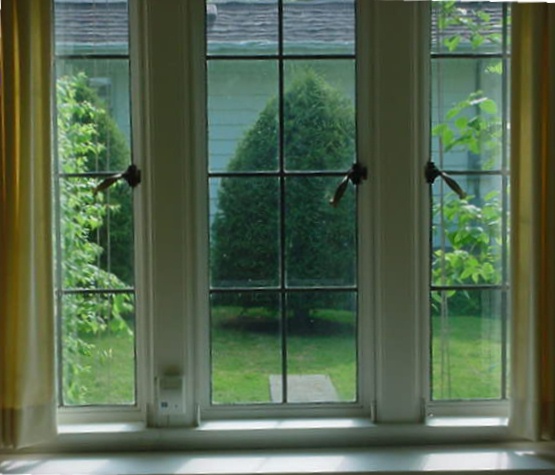Contact Bob
- 217.474.6052
- yapperman@msn.com
-
Belvedere School for Hands On Preservation
521 Bird Street, Hannibal MO 63401
Be sure to subscribe to my YouTube channel.
 Over the years I’ve been around and worked on many steel casement windows in Tudor Revival style homes as well as commercial buildings. They were popular from about 1910 to 1935. I’ve also seen many homeowners rip them out and replace them with inferior and less energy efficient windows. In 2005 we bought a classic Tudor Revival in Danville, Illinois that has the very best steel windows I’ve ever seen. Made by Hope in England they are all clear leaded glass with bronze hardware and interior roll-up screens.
Over the years I’ve been around and worked on many steel casement windows in Tudor Revival style homes as well as commercial buildings. They were popular from about 1910 to 1935. I’ve also seen many homeowners rip them out and replace them with inferior and less energy efficient windows. In 2005 we bought a classic Tudor Revival in Danville, Illinois that has the very best steel windows I’ve ever seen. Made by Hope in England they are all clear leaded glass with bronze hardware and interior roll-up screens.
The big issue for most homeowners with classic steel casement windows is energy efficiency. While steel is not a good insulator of heat or cold, glass is far worse. The windows in our homes are responsible for 12 to 15% of our heat loss regardless of what material the window sash is made of or the type of glass. Air infiltration is the primary culprit when it comes to energy loss and comfort.
When your steel windows were originally installed, they closed snugly with metal on metal. Over the years these sashes get racked and won’t close properly. John Seekircher owner of Seekircher Steel Window Repair in Scarsdale, New York puts it this way, “Re-aligning a steel window is a lot like a chiropractor re-aligning you.” The causes of steel window racking can be attributed to excessive layers of paint, foundation settling, broken or non-functioning handles, loose hinges and surface rust. By re-aligning the sash, removing paint and rust, repairing moving parts, installing new glazing putty and re-painting with oil paint, your windows will be look like new and stop all primary air infiltration. Caulking around the jamb, (the metal frame the casement sash is hinged to) inside and out, will take care of secondary infiltration.
“All of this restoration can be completed for around 75% less than steel replacement windows,” Seekircher says. Even with the high heating costs we have experienced, you can see that the pay back for replacement windows or retro-fitting double paned glass into these windows is non-existent.
If you really want more thermal efficiency there are a couple of options. Several years ago I ran across a study showing that 1/4″ laminated safety glass, with a .060 thick laminate in the middle, approaches the R-value and U-value of double paned glass with a 5/8″ air gap. It also costs less than double paned glass, has 99% UV protection, is more sound resistant, is safer, and you never have to worry about failing seals between the panes of glass. All glass shops sell this and it costs less than double paned glass.
Another option is a screen that discreetly rolls up and down like a window shade. These slide up and down a small track attached to the jamb and stool (interior sill). Non-yellowing, acrylic storm panels are then attached to the screen track with built-in magnetic strips. There are also several other interior storm window options.
Seekircher Steel Window Repair
Parts & Total Restoration Services
423 Central Avenue
Peekskill, New York 10566
Hopes Windows, Inc.
Manufacturers of traditional steel casement windows.
84 Hopkins Avenue
Jamestown, New York, 14702
Walsh Screen & Window, Inc.
Roll-up screens & interior storm manufacturer & distributor
Jim Walsh
555 East Third Street
Mount Vernon, New York 10553
Toll free: 866-925-7479